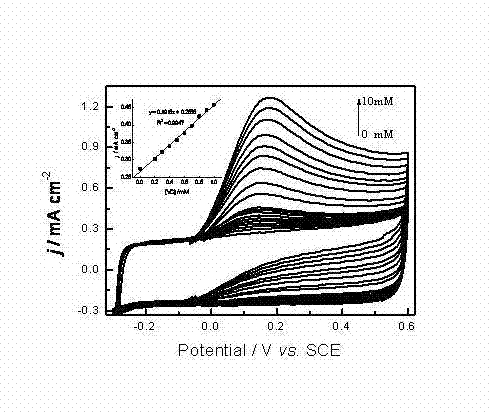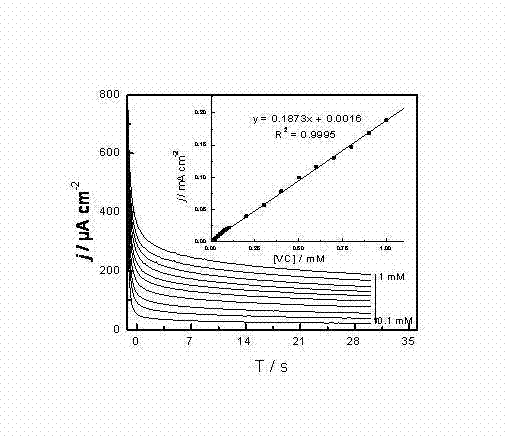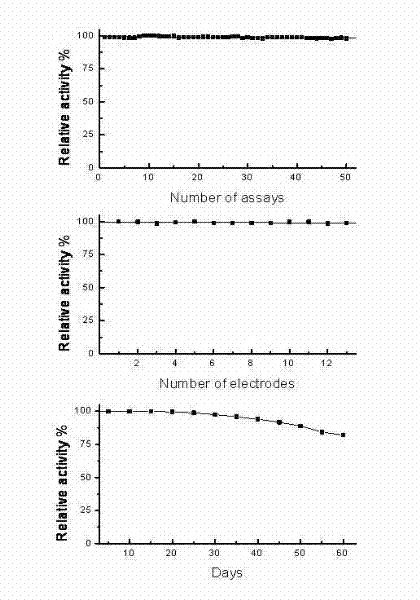Preparation method of ascorbic acid oxidase electrochemical biosensing composite modified electrode
A technology for modifying electrodes and acid oxidase, which is applied in the field of biosensors, can solve problems such as poor biocompatibility, small detection range, and impact on accuracy, and achieve the effects of strong affinity, short response time, and wide linear range
- Summary
- Abstract
- Description
- Claims
- Application Information
AI Technical Summary
Problems solved by technology
Method used
Image
Examples
Embodiment Construction
[0012] A method for preparing an ascorbate oxidase electrochemical biosensing composite modified electrode, comprising the following steps:
[0013] 1. Preparation of electrolyte solution: firstly mix 1.42 mg 3,4-ethylenedioxythiophene, 2.93 mg sodium lauryl sarcosinate, 1 mg 0.1 wt% carbon nanotube dispersion, 2.36 mg 1- Ethyl-3-methylimidazolium ethyl sulfate was ultrasonically dissolved in deionized water with a total volume of 1 ml, and finally mixed evenly to obtain an electrolyte solution.
[0014] 2. Preparation of high-performance conductive poly(3,4-ethylenedioxythiophene) nano-film composite modified electrode: Nitrogen gas was passed into the above electrolyte solution for 20 minutes to remove dissolved oxygen in the solution, and a conventional three-electrode system was used. Poly(3,4-ethylenedioxythiophene) nano-film composite modified electrodes were prepared in one step by constant potential polymerization at 1.1 V for 60 seconds, and the whole process was carr...
PUM
 Login to View More
Login to View More Abstract
Description
Claims
Application Information
 Login to View More
Login to View More - R&D
- Intellectual Property
- Life Sciences
- Materials
- Tech Scout
- Unparalleled Data Quality
- Higher Quality Content
- 60% Fewer Hallucinations
Browse by: Latest US Patents, China's latest patents, Technical Efficacy Thesaurus, Application Domain, Technology Topic, Popular Technical Reports.
© 2025 PatSnap. All rights reserved.Legal|Privacy policy|Modern Slavery Act Transparency Statement|Sitemap|About US| Contact US: help@patsnap.com



